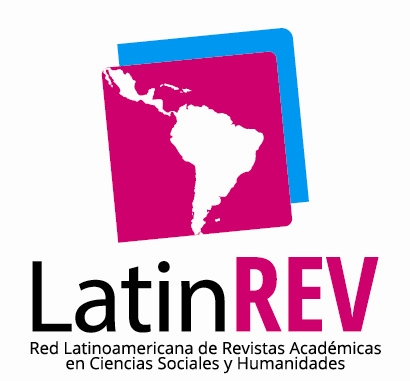The poem "The pain of the night" by José María Eguren from the perspective of discourse analysis
DOI:
https://doi.org/10.35622/j.rep.2021.01.001Keywords:
Analysis, discourse, pragmatics, semioticsAbstract
The objective of this work was to determine the meaning of the poem “El dolor de la noche” by José María Eguren from the perspective of discourse analysis. This research corresponds to the qualitative approach and is descriptive. The method used to analyze the poem was hermeneutics and as a technique the analysis of poetic discourse that encompassed the textual, enunciative, semiotic and pragmatic dimension. As a result, the sadness and suffering caused by the loss of a loved one is evident, finding the subject in a state of loneliness, expressing messages of remorse and will go for what he lost and did not know how to live at the time.
Estadísticas del Artículo
References
Alexander T. Latinjak. (2012). The Underlying Structure of Emotions: A Tri-Dimensional Model of Core Affect and Emotion Concepts for Sports. 7, 71–87.
Álvarez, J. M. (2013). La Tristeza Y Sus Matices. 1–14.
Anchante, J. (2017). La poetica simbolista en el poemario la canción de las figuras de Jose Maria Eguren. 1–29.
Anchante, J. (2018). El simbolismo francés y la poesía peruana - Nicanor della Rocca de Vergalo, Manuel González Prada y José María Eguren. Universidad Nacional Mayor de San Marcos, 354.
Austin, J. (1962). How to do things with words (J. O. Urms). London.
Beaugrande, R., & Dressler, W. (1981). Introduction to text linguistics. London: Longman.
Benveniste, É. (1977). Problemas de la lingüística general II (S. X. Editores, ed.). Paris.
Bobes, M. del C. (2004). Teatro y Semiología. Arbor. Retrieved from http://arbor.revistas.csic.es
Calatrava, J. R. V. (2011). Hacia otra nueva interpretación del poema Los Reyes Rojos, de José María Eguren. XXXIV, 301–310.
Corredor, J., & Nieto, L. (2007). Un vistazo a los pilares de la lingüística moderna: Saussure, Chomsky y Van Dijk del estructuralismo a la lingüística textual. Redalyc, 15.
Cuervo, A., & Izzedin, R. (2007). Tristeza, depresión y estregias de autorregulación en niños. 2. Retrieved from http://www.redalyc.org/pdf/1390/139012670004.pdf
Huerta, S. (2010). Coherencia y cohesión. Herencia, 76–80. Retrieved from https://dialnet.unirioja.es/descarga/articulo/3401183.pdf
Macann, C. (1993). Four phenomenological philosophers. In Four Phenomenological Philosophers. https://doi.org/10.4324/9780203981498
Mariño, C. F. F. (2018). El arte de Jose María Eguren: poesía y pintura – límites de lo inimaginado.
Meersohn, C. (2005). Introducción a Teun Van Dijk: análisis de discurso. Revista de Espitemologia de Ciencias Sociales, 15.
Mendieta, G., Ramírez, J., & Fuerte, J. (2015). La fenomenología desde la perspectiva hermenéutica de Heidegger: una propuesta metodológica. Dialnet, 33(3). https://doi.org/10.17533/udea.rfnsp.v33n3a14
Núñez, E. (1938). La poesìa de Eguren (C. de I. y Publicidad, ed.).
Núñez, J. (2019). El poema XI de Alberto Mostajo a la luz del Análisis del Discurso. Revista Innova Educación, 1(2), 215–227. https://doi.org/10.35622/j.rie.2019.02.008
Sánchez, J. (2013). Ensayo sobre la vida de Dilthey. Scientia Helmatica. Revista Internacional de Filosofía., 18.
Sandoval, R. (1988). El centinela de fuego: agonía y muerte en Eguren (A. y C. Instituto Peruano de Literatura, ed.). Lima.
Published
Issue
Section
License
Copyright (c) 2021 Lady Lujano, Lisbeth Mamani-Yupanqui, Cinthia Silva (Autor/a)

This work is licensed under a Creative Commons Attribution 4.0 International License.
La Revista Estudios Psicológicos del Instituto Universitario de Innovación Ciencia y Tecnología Inudi Perú está sobre una licencia internacional Creative Commons Atribución 4.0. Lo que permite que los archivos sean de libre acceso y distribuidos libremente.
LOS AUTORES RETIENEN SUS DERECHOS:
- Los autores retienen sus derechos de marca y patente, y tambien sobre cualquier proceso o procedimiento descrito en el artículo.
- Los autores retienen el derecho de compartir, copiar, distribuir, ejecutar y comunicar públicamente el artículo publicado en la Revista Estudios Psicológicos (por ejemplo, colocarlo en un repositorio institucional o publicarlo en un libro), con un reconocimiento de su publicación inicial.
- Los autores retienen el derecho a hacer una posterior publicación de su trabajo, de utilizar el artículo o cualquier parte de aquel (por ejemplo: una compilación de sus trabajos, notas para conferencias, tesis, o para un libro), siempre que indiquen la fuente de publicación (autores del trabajo, revista, volumen, número y fecha).



















